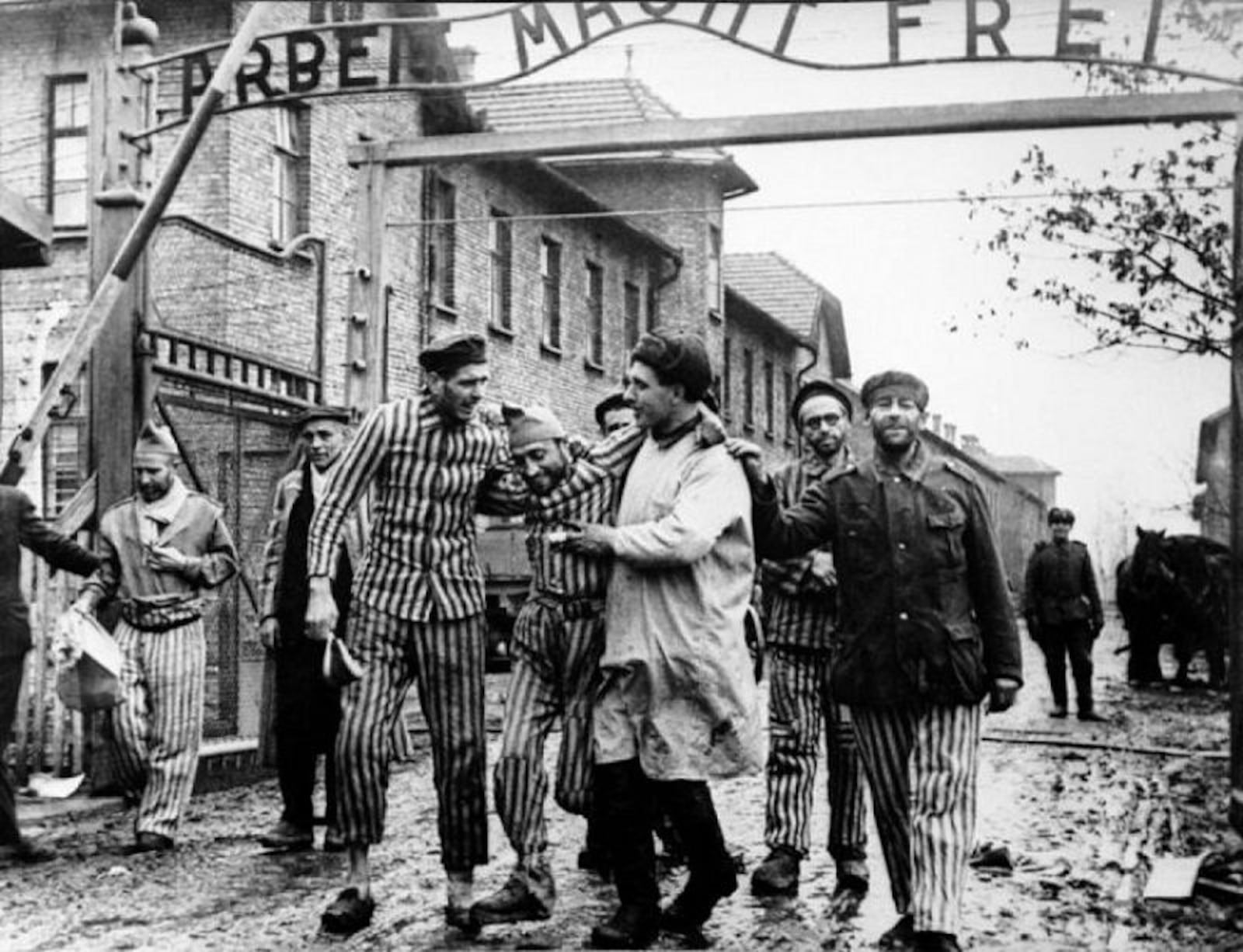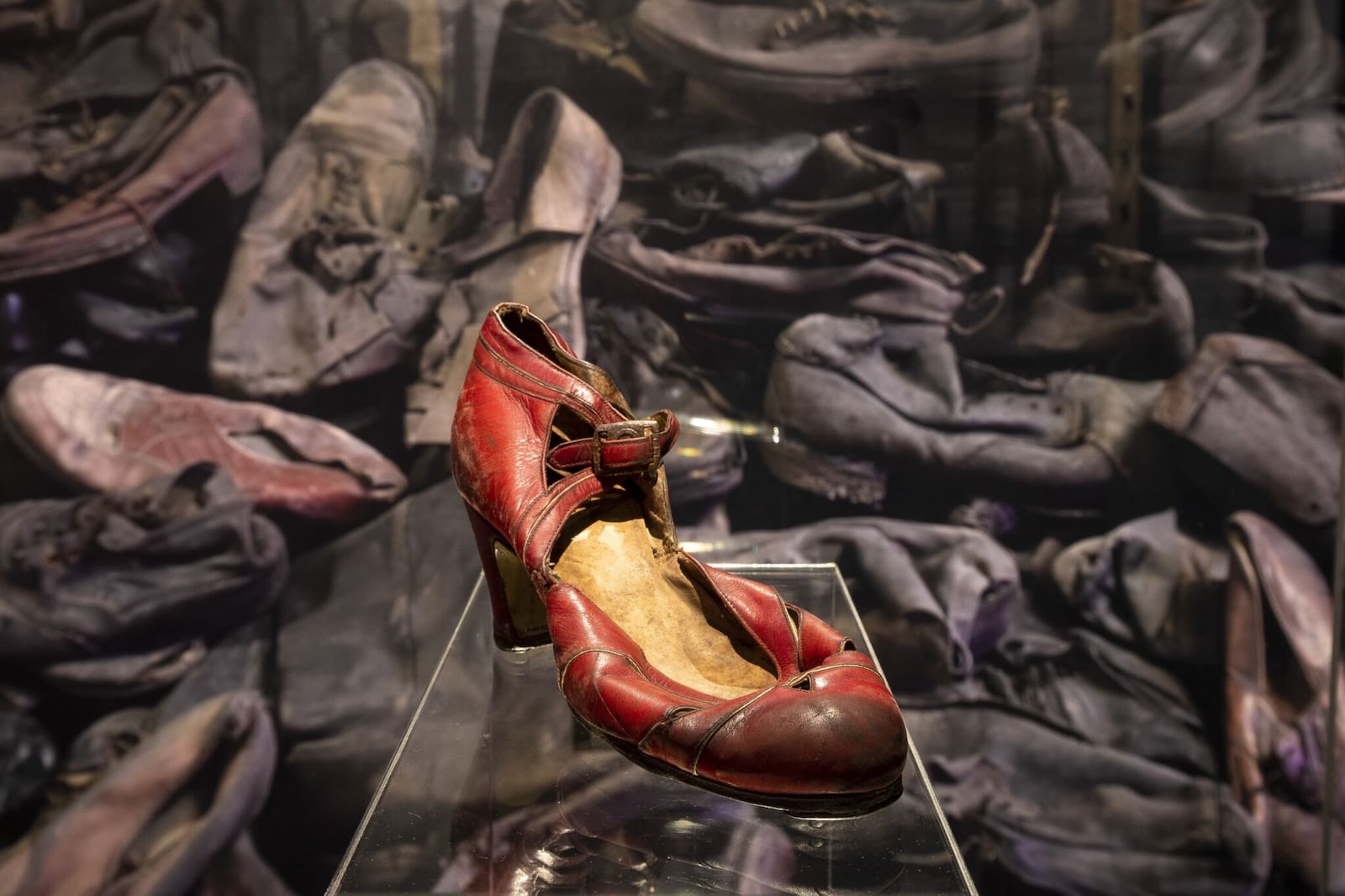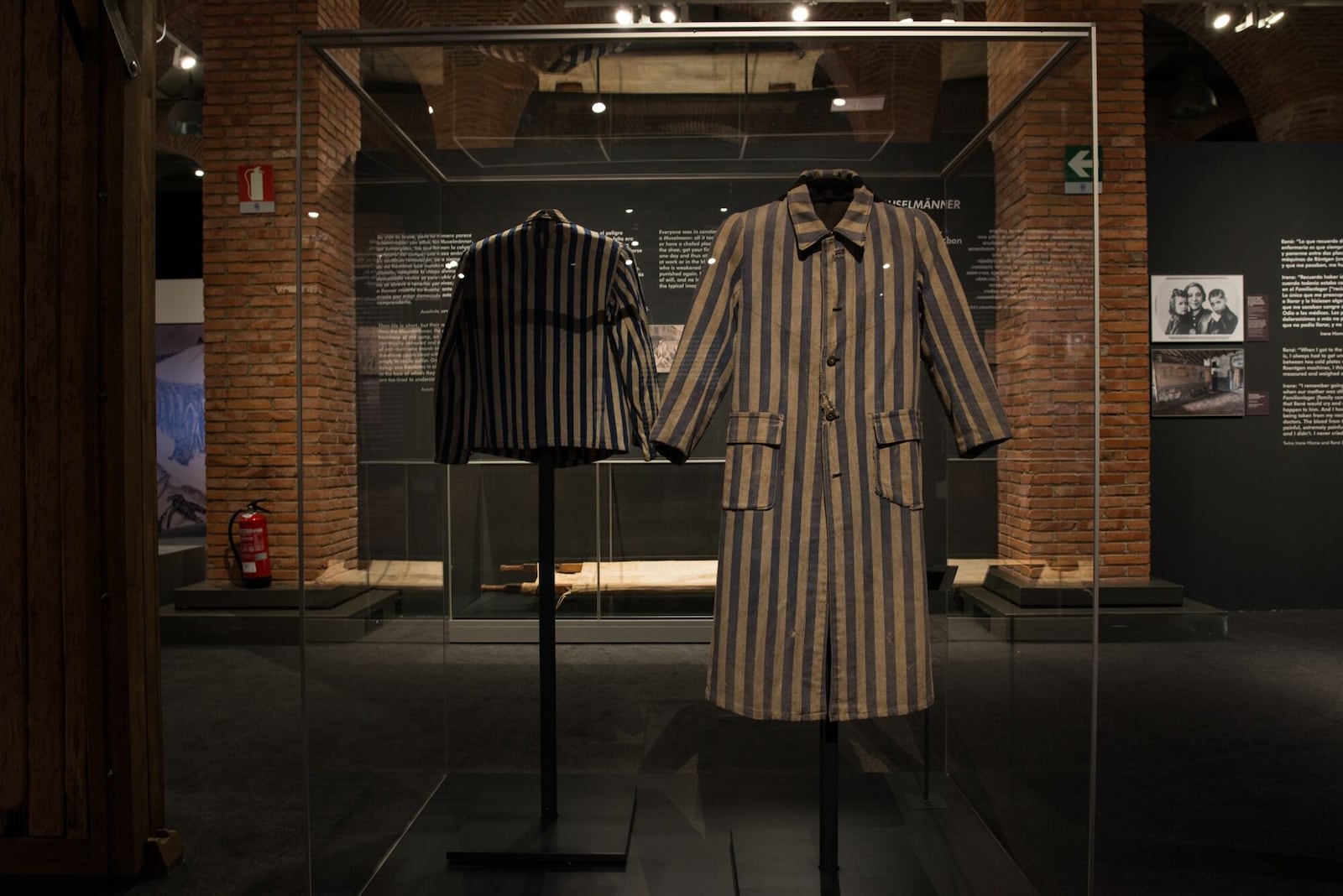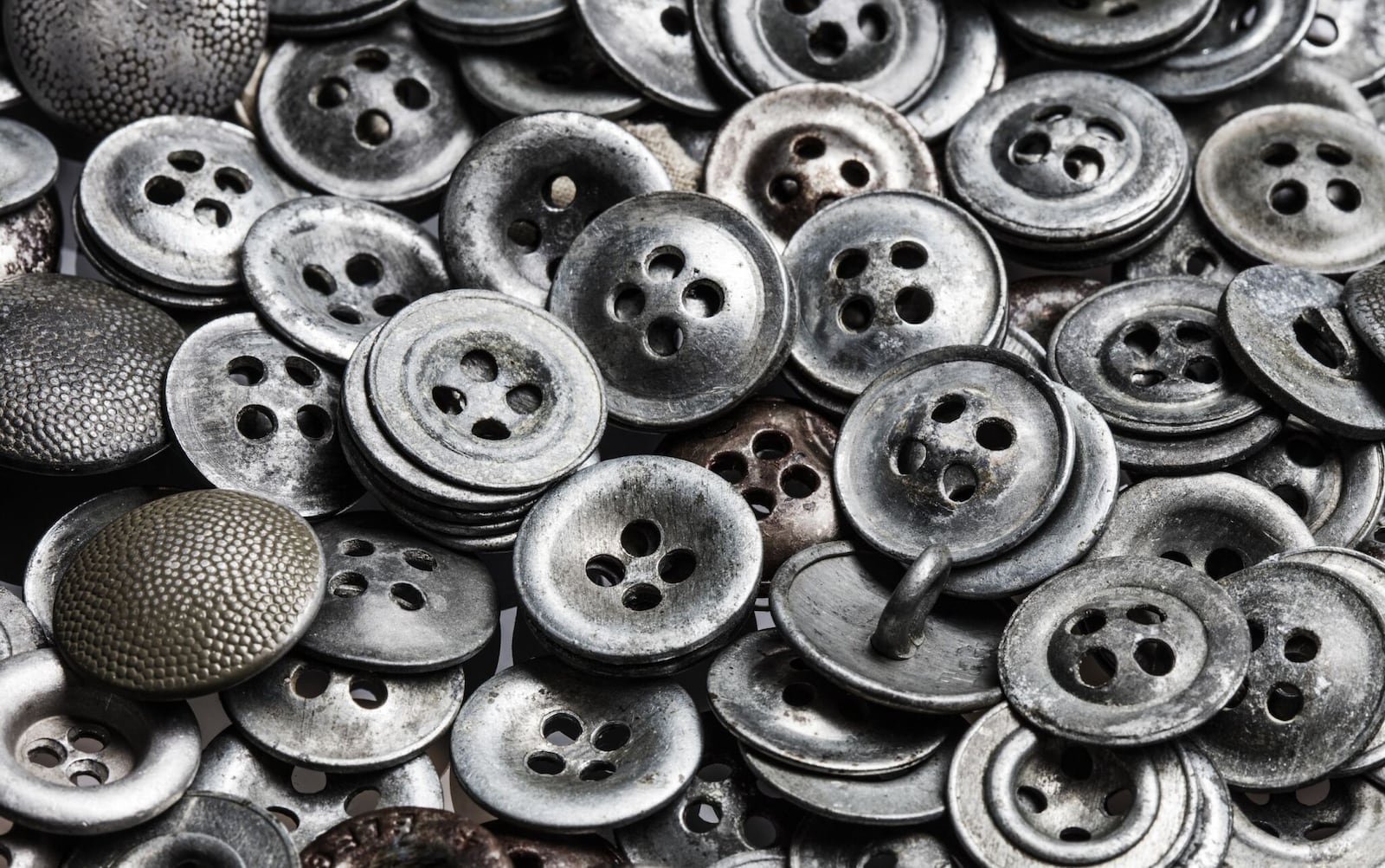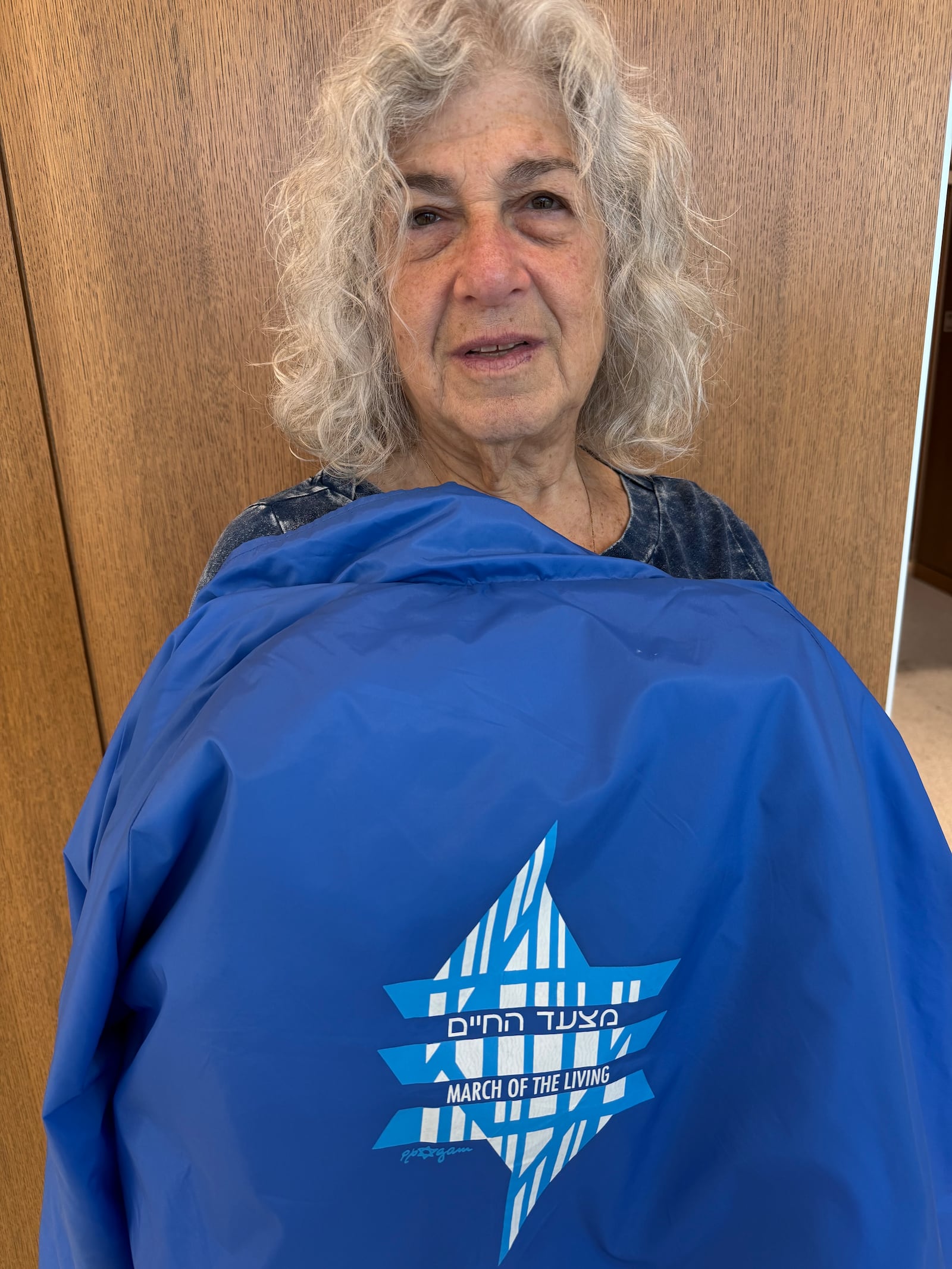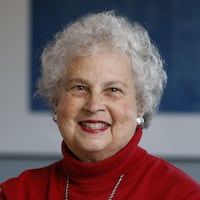More than 1 million people were murdered there, including Halcomb’s grandparents and aunt.
Halcomb, who lives in Trotwood, attended the opening of Cincinnati Museum Center’s current exhibition “Auschwitz: Not Long Ago, Not Far Away.” On display through April 12, 2026, it’s the largest traveling exhibit ever installed at the museum.
“Elie Wiesel and my dad were from the same hometown, Sighet, Romania,” said Halcomb. “The story of Wiesel’s famous book ‘Night’ is the story of how they were rounded up and sent to Auschwitz in 1944. My dad was on the same train and spent 18 months in the camp. He survived a death march and was liberated in 1945.“
Pawel Sawicki, the deputy spokesperson from Auschwitz who has been traveling with the exhibit since 2017 said the exhibition not only gives facts and stories of the past but also places us in front many questions relevant to our lives today.
“All ideologies that led to Auschwitz over eight decades ago are still among us,” he said.
What you will see
Visitors should be prepared to spend at least two hours at the exhibition. The mood is hushed, somber. It feels like you are attending a funeral or memorial service, which indeed you are.
Of the 1.3 million sent to Auschwitz, barely 400,000 were registered and imprisoned in the compound. The other 900,000 were killed within hours after their trains arrived.
The “life or death” decision was made within seconds. When the victims got off the trains, they were forced to form two lines: one for women, one for men. Immediately SS doctors determined whether each human being would live or die. More than 50% of those that were chosen to live later died of starvation, exhausting work, execution and torture, diseases and epidemics.
The Cincinnati tour, which includes an audio device, is divided into four areas. You’ll learn about the ideology of Hitler and the Nazi Party, the climate in Germany at the time, and the ways in which antisemitism became institutionalized. Overall, six million men, women and children were murdered during the Holocaust and although 90 percent were Jews, there were other groups as well.
“The exhibit does an excellent job of showing the time table of how the Holocaust could have happened and a great job of showing that it wasn’t just Jews who were affected,” Halcomb said. “In the camp, prisoners wore different color triangles depending on how they were classified, whether they were Jehovah’s Witnesses, political prisoners, homosexual men, Roma. (Sinti and Gypsy.)”
Life treasures
Some of the items on display are the small personal items belonging to the victims: an inmate’s suitcase, a handmade doll, a woman’s dress shoe, a child’s stroller, lipsticks, buttons and perfume bottles.
“Jews were promised new life and hope,” said Sawicki. “Hope was used as a weapon.”
You’ll see a blanket used on a death march. When Soviet troops began approaching, nearly 60,000 prisoners from Auschwitz and its sub camps were evacuated, forced to march miles in the freezing weather.
One of those on the death march was Halcomb’s father. It is estimated that as many as 15,000 prisoners died during the evacuation.
“They literally walked them to death,” she said. “They shot you if you stopped walking and my father said the people who were dying or were too ill to walk farther would be left behind. At one point, he stayed behind in the Nazi camp, Flossenburg, and that’s where he was liberated when the Americans got there.”
The Nazis were ordered to destroy all evidence of their crimes, but when Soviet troops arrived at Auschwitz they discovered irrefutable evidence of what had taken place. In addition to 7,000 people too sick to march, they found mountains of unburied bodies, hundreds of thousands of men’s suits and women’s dresses, and 14,000 pounds of human hair ready to be sold in Germany.
One of the most heartbreaking artifacts is a single child’s shoe with the sock still inside it.
“The sock and shoe must have been the last things a child removed when undressing at the gas chamber,” said Sawicki, “His mother must have told him to put his socks into the shoes so they could find them later.”
There are concrete posts from the camp, prison uniforms, an operating table from the camp hospital, a whip and fragments of an original prisoners’ barrack from the Auschwitz III-Monowitz camp. There’s a large cauldron and wooden spoon from the camp kitchen that, when filled, contained the thin soup that fed 200 people a day.
There’s the desk of Auschwitz’s first camp commandant, Rudolf Höss, who developed the camp’s horrifyingly efficient system of gassing and cremation.
Figures like Höss make easy monsters, but Sawicki points out that the third commandant of Auschwitz was Richard Baer, “He was 33 years old and a confectionery maker.”
“It reminds us that these atrocities were done by humans. People are not born victims but they are also not born perpetrators. These hateful ideologies can turn people into perpetrators if they start looking at people as ‘others,’” Sawicki said.
Local connections
On two different occasions Halcomb revisited her father’s past.
“I went with my parents to the American Gathering of Jewish Holocaust Survivors held in Washington, DC in 1983. I also went with my Dad and sisters to the ”March of the Living" in 2010."
The annual educational program conducted on Holocaust Remembrance Day in Poland attracts more than 10,000 participants each year. Halcomb said it was awe-inspiring.
“During the Holocaust, people were unloaded at the train station in Birkenau and walked to their fate at Auschwitz,” Halcomb said. “For the ‘March of the Living’ that walk is reversed and you walk from Auschwitz to Birkenau. Instead of marching to your death you are marching to celebrate life.”
Addressing the exhibition’s opening day crowd was Steve Coppel, whose father was an Auschwitz survivor who came to Cincinnati in 1949, hoping to build a new life after his 11-year-old brother and almost all of his family and friends had been murdered.
“He stepped off the train right here at Union Terminal,” Coppel said. “He arrived with his wife, his baby and one suitcase. That same suitcase, worn and simple, is now part of this exhibition, on display just steps away from where he stood when he came to this city. Every time I see it, I am struck by what it represents. It’s not just luggage — it’s a symbol of survival, of resilience, and of everything my father carried that couldn’t be packed: faith, courage and determination."
Coppel said the exhibition asks each of us to reflect on what we can do: how we respond to hate, how we show courage and how we stand up for one another.
“It reminds us that remembrance is not passive. It demands empathy, awareness and action. My hope is that everyone who visits leaves not only remembering the past, but also inspired to act — to speak up, to reach out, and to be an upstander.”
HOW TO GO:
What: “Auschwitz. Not long ago. Not far away.”
Where: Cincinnati Museum Center, 1301 Western Ave., Cincinnati
When: Daily through April 12, 2026. Open from 10 a.m. to 5 p.m. seven days a week.
Admission: $32 for a timed ticket, flex tickets are $37.50 and allow re-entry on the same day. Seniors are $34.50 and children ages 3-12 are $29.50. Tickets and group sales info available at cincymuseum.org/Auschwitz.
Hosted by Cincinnati Museum Center and the Nancy & David Wolf Holocaust & Humanity Center (also located at the Cincinnati Museum Center.) With the purchase of a ticket to the Auschwitz exhibit, guests receive a discount ticket to the Holocaust & Humanity Center.
About the Author
